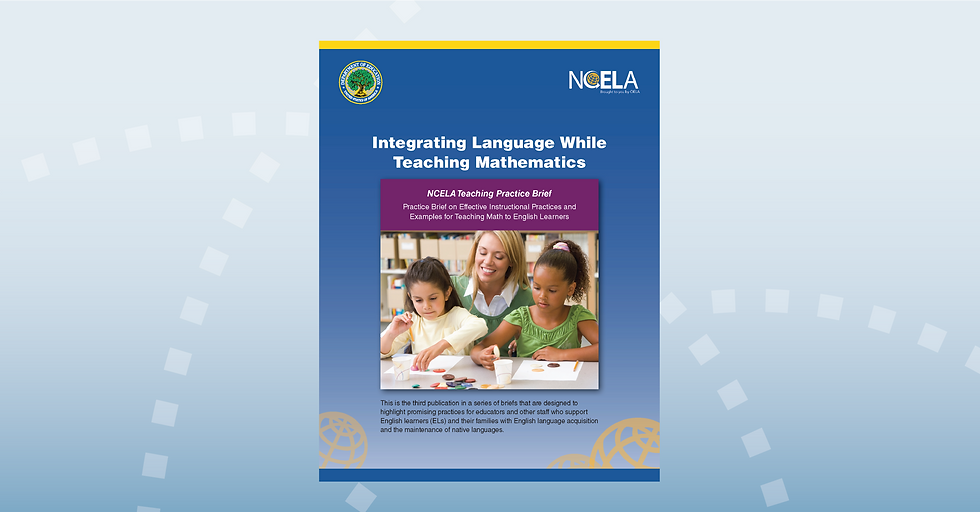Embrace English Learners' assets to support them as full participants in learning mathematics
- Patricia Lopez-Hurtado

- Apr 11, 2022
- 2 min read
By Haiwen Chu and Eunice Chow

English Learners come to mathematics classes with a wealth of personal, cultural, and community knowledge and experiences that can serve as important assets in the classroom. Learning new mathematical ideas will be most effective when students have opportunities to make explicit connections to their lived experiences. Teachers who know their English Learners’ assets can facilitate students making connections from real-world experiences to mathematical ideas.
As an example, one team of middle school mathematics teachers thought about real-world contexts related to the mathematical topic of rates. They thought about something that their students do: listen to music and create playlists. They therefore created a prompt for students to reply to: “If my playlist is twice as long, it will take twice as long to finish.” Because this everyday practice was a familiar to their students, including their English Learners, teachers were able to elicit ideas about the lengths of songs, and the conditions under which such a statement would be true or false.
Teachers looking to grow this area of expertise could employ a variety of tools to help them recognize and embrace the rich experiences and knowledge that English Learners bring to their mathematics learning. For instance, as teachers are planning a lesson on equations or the average of a set of numbers, they might choose to focus on an analogy of balance. Teachers can solicit students’ experiences and associations with balance, and then discuss with students how these experiences are similar to ideas in mathematics, but also distinct. In doing so, teachers recognize the value of each student’s unique knowledge and experiences, enhancing English Learners’ mathematical experiences.
This practice of staying focused on students’ assets is important in helping English Learners to view themselves as powerful agents of their own learning, and further engages students while honoring the rich diversity of each student’s unique experience.
We are excited to further share this practice along with additional resources, in the full “Integrating Language While Teaching Mathematics” brief. Click here to learn more.



Comments